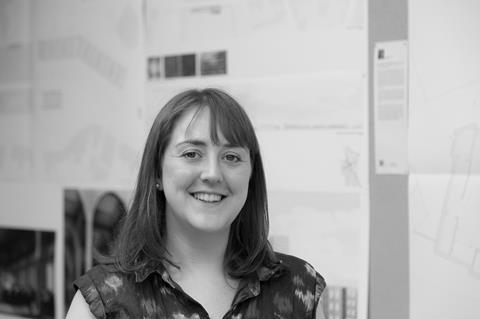RIBA figures suggest the overall gender pay gap for the profession could be more than 43%. But Eleanor Jolliffe counsels against a kneejerk reaction

By April 5 all firms with more than 250 employees are legally required to publish their gender pay gap. Several of the larger architectural firms have already published – accompanied by a flurry of headlines.
Before we go any further it should be made very clear that a gender pay gap does not necessarily equate to unequal pay. Equal pay means (according to the Law Society) that men and women in the same employment performing equal work must receive equal pay, as set out in the Equality Act 2010.
The gender pay gap is a measure of the difference between men’s and women’s average earnings across an organisation or the labour market. It is expressed as a percentage of men’s earnings.
Equal pay is a legal obligation. There should never be a difference in the pay of a man and woman doing work of equal value that can be explained in terms of difference in their gender – as that would be a criminal act on the part of the employer.
With this clear we should not be afraid of embracing the gender pay gap data for the useful analytical tool it is. The gender pay gap raises a real issue in our profession and society. It also raises the emotive and potentially divisive issues of gender and money. In this set of circumstances it can be easy to let outrage and perception outrun logic.
The RIBA kindly gave me the median pay figure for each band of employment (non-architectural, part Is, part IIs, Arb less than five years, etc) and the percentage of each of these bands that are male/female. It came from the RIBA’s latest benchmarking data. Benchmarking is a requirement for all RIBA chartered practices so this data represents the breadth of the profession.
Using this data and the government’s guidance notes I calculated an indicative gender pay gap figure. I say indicative because I should be clear that this was not the full breakdown of all salaries across all practices but done on median pay – so the level of detail is not as great as that gone into by practices who have reported.
Based on this data the (mean) gender pay gap across all staff at all RIBA chartered practices is 43.75%. My gut reaction is this sounds horrendous, shameful and headline-worthy – but you can’t take this figure on face value alone.
When the pay gap is broken down a little further it becomes more explainable. Within the upper pay quartile 77.65% of all employees are male and 22.35% are female. The upper middle quartile is 64.63% male. The lower middle pay quartile is 70.68% male and the lower pay quartile 44.72% male. Statistically if you are a high-earning employee in a UK chartered practice you are male. If you are a low-earning employee you are most likely female.
Overall 63.8% of all employees in UK chartered practices are male and 36.2% are female. Taking these quartiles and overall figures into account the 43.75% gap is looking less like institutionalised pay disparity and more like the unwillingness or inability of UK practices to hire and promote women.
According to the Arb in 2011, 80% of all registered architects were male. At the end of 2016 (which is the most recently reported data) this had dropped to 74%, with new applications to the register being only 56% male. This data alone suggests that the diversity of our profession is adjusting quickly to a more equal distribution and that within a few years the gender pay gap across the profession is likely to drop.
Of course these figures do not rule out the reality of gender inequality and discrimination in UK practice. Everyone is anecdotally aware of instances of this – whether they be explicit and shameful, or so subtle the majority of women in practice are unsure whether they can legitimately complain. The breadth of practice sizes and types when correlated with the breadth of personalities means that almost inevitably I believe there will be UK practices actively discriminating against women. The green shoots of recovery all around lead me to hope the days of these dinosaurs might be numbered.
The issue of the gender pay gap is not helped by emotive reporting. Worse, I believe sensationalising these issues undermines and belittles the problems women face in practice, suggesting that they are an amusing side-show to be focused on until the next shiny or distracting issue comes along to take its place.
Like so many institutionalised problems that are deeply embedded in culture, gender inequality issues cannot and will not be changed overnight. Indeed it is likely that the situation will begin to appear worse (like the #metoo campaign and snowballing accusations of child sexual abuse/grooming) while the extent of the problem is uncovered.
For healing to begin we need to fully understand the extent of the problem we are facing. There are signs of change everywhere and it is a change I believe most of the industry is past ready to make. Gender pay gap analysis – when used sensitively and thoughtfully – is a useful and powerful tool in our understanding of the problem. Used indiscriminately or sensationally it will increase and entrench perceived and real injustices, further dividing and weakening our profession.
















17 Readers' comments